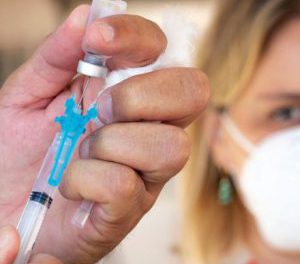A new study has found that generic drugs manufactured in India are associated with significantly more “severe adverse events” than equivalent drugs produced in the United States. These adverse events include hospitalization, disability, and, in rare cases, death.
The research, published in the journal Production and Operations Management, focused on mature generic drugs—those that have been on the market for an extended period. The findings challenge the common belief that all generic drugs are equally safe and effective, said John Gray, co-author of the study and professor at The Ohio State University’s Fisher College of Business.
Manufacturing Practices and Drug Safety
Gray emphasized that drug manufacturing regulations and quality assurance practices differ between emerging economies like India and advanced economies like the United States. “Where generic drugs are manufactured can make a significant difference,” he noted.
George Ball, another co-author and associate professor at Indiana University’s Kelley School of Business, added, “The FDA assures the public that all generics patterned after the same original drug should be equivalently safe and effective. However, this is not necessarily the case when it comes to generic drugs made in India.”
The research team was led by In Joon Noh, an assistant professor at Korea University, and included scholars from Ohio State University, Brigham Young University, and Seoul National University. Many of the authors have collaborated with the FDA on federal grants and contracts, though this study was conducted independently of the agency.
A Breakthrough in Transparency
A major achievement of the study was linking generic drugs to the plants where they were manufactured. The FDA does not release this information through the Freedom of Information Act, but the researchers used a dataset called Structured Product Labeling to establish these connections. “Overcoming this lack of transparency of drug manufacturing location is one of the major accomplishments of our study,” Gray said.
The study analyzed 2,443 generic drugs produced in the United States and emerging economies, with 93% of the latter originating from India. By comparing the frequency of adverse events reported in the FDA’s Adverse Event Reporting System (FAERS), the researchers found that severe adverse events were 54% more frequent in drugs made in India compared to their U.S.-manufactured counterparts.
Regulatory and Industry Implications
The findings were primarily driven by older drugs that had been on the market for a longer time. “As older drugs become cheaper, competition intensifies, and cost-cutting measures may compromise drug quality,” Gray explained.
Despite the study’s findings, Gray cautioned against interpreting the results as a call to halt overseas generic drug production. “There are good manufacturers in India, and there are bad manufacturers in the U.S. This is a regulatory oversight issue that can be improved,” he said.
One major issue highlighted in the study is the difference in FDA inspection procedures. While U.S. manufacturing plants are subject to unannounced inspections, overseas inspections are prearranged, potentially allowing manufacturers to conceal quality issues. The researchers suggest that unannounced inspections worldwide could enhance oversight and improve drug safety.
“A key recommendation we make is for the FDA to make drug manufacturing location and quality more transparent for consumers,” Ball added. “This can help create a market in which drug quality is incentivized more than it is today.”
Disclaimer: This article is based on independent academic research and does not reflect the views of regulatory agencies or industry stakeholders. Readers are encouraged to consult healthcare professionals for medical advice and consider multiple factors when evaluating prescription drug options.












